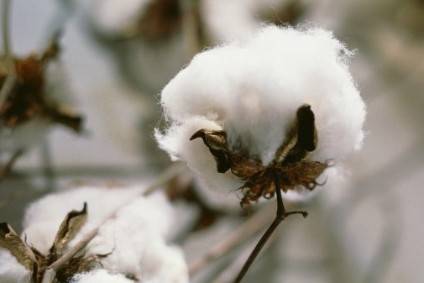
The the Covid-19 pandemic is continuing to weigh on the cotton market, with prices likely to remain low due to higher ending stocks, weaker textile fibre demand from brands, and lower polyester prices, a new suggests.
Research by the International Cotton Advisory Council (ICAC), ‘Impact of the Covid-19 Lockdown on the Cotton Market,‘ notes that if the price gap between cotton and polyester continues to widen, this would reduce cotton’s competitiveness and decrease its world share of textile fibre consumption.
“The global cotton market is affected by fundamental factors of supply and demand and has been impacted by the Great Lockdown resulting from the Covid-19 pandemic,” the report notes. “Covid-19 has had far-reaching impacts on agricultural trade, manufacturing, consumer demand, and prices. The impact on the global cotton value chain has put pressure on all sectors of the value chain. The containment measures that have effectively halted an overwhelming portion of the global economy have and will continue to have deep impacts on the cotton sector.”
The ICAC’s global production estimate for 2019/20 is at 26.2m tonnes, with production for 2020/21 currently estimated at 25.2m tonnes, a 4% decrease as global area decreases based on lower prices.
Global consumption for 2019/20 is currently estimated at 23m tonnes from the additional pressure of containment measures and the continual pressure of global trade tensions. With decreasing use, ending stock levels are expected to rise to 21.8m tonnes with the stocks-to-use ratio at record high levels.
The current IMF projection of a 3% contraction in the global economy is expected to contribute to an 11% decrease in cotton consumption. However, as GDP growth accelerates, consumption growth recovers.

US Tariffs are shifting - will you react or anticipate?
Don’t let policy changes catch you off guard. Stay proactive with real-time data and expert analysis.
By GlobalDataThe top three largest importers of textile and apparel products by value – the EU, the US and Japan – significantly reduced textile and apparel imports in the first quarter of 2020. Since late February, many textiles and apparel export orders have been cancelled or delayed and major retail companies have filed for bankruptcy.
As a result, the ICAC says short-term prospects for the textile and apparel industry are expected to be grim. In particular, cotton merchants risk a decline in the value of trade because of contract cancellations and market losses. Storage charges may represent costs of US$16m per month. The losses to the merchant sector caused by the contract cancellations linked to Covid-19 will likely cause more firms to exit the cotton trading industry.
The International Textile Manufacturers Federation (ITMF) conducted surveys on the Covid-19 impact on the global textile industry in March-April. The survey reached 700 companies and indicates that in 2020, cancellations of orders could reach 31% and the employee turnover could reach 28%. That could mean total losses for the global textile industry of about $300bn, the ICAC says.
“The cotton and textile industry has been suffering terribly since the global economy was essentially shut down by the novel coronavirus but it’s been difficult to assess the damage so far — and even harder to find something positive to report on,” it notes.
The ICAC offers two recovery scenarios. A moderate recovery could be envisioned in a ‘new normal’ with safety ensured by proper local and national government responses and policies, businesses could safely reopen, and economic activity could begin to increase with appropriate precautions being taken to provide for health and wellbeing.
A slower recovery, it says, could be envisioned where either stringent containment measures remain in place and government policies including those for public health systems, small business and unemployment remain weak or ineffective.
“A slow recovery extending beyond 12 to 18 months with little action to promote consumer demand would lead to a more severe contraction in cotton mill-use in 2021,” the ICAC notes. “With the global 20/21 production estimated at 25.1 million tonnes, an additional economic slowdown and slow consumption growth would increase pressure on ending stocks, which in turn increase downward pressure on prices.”




